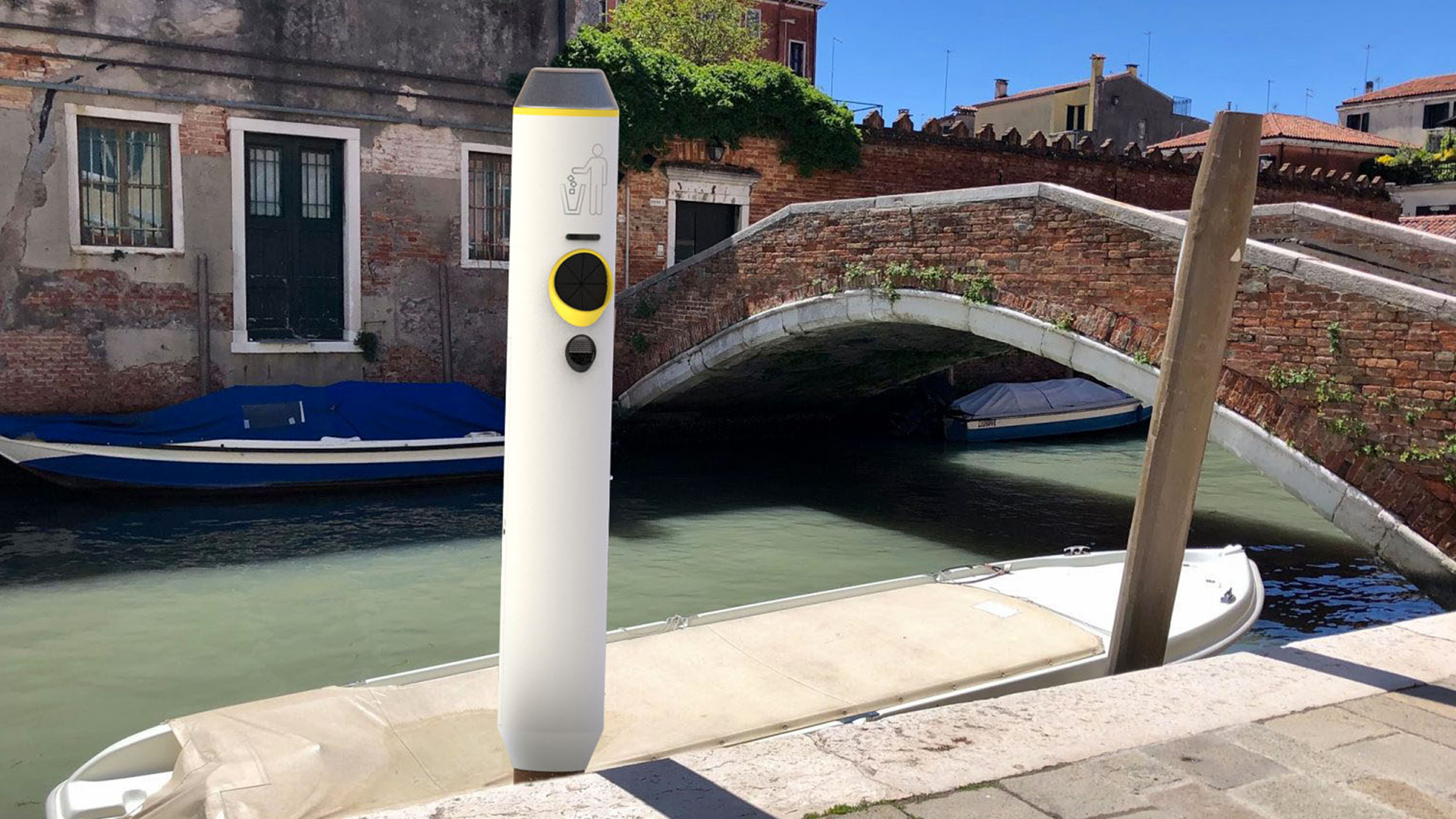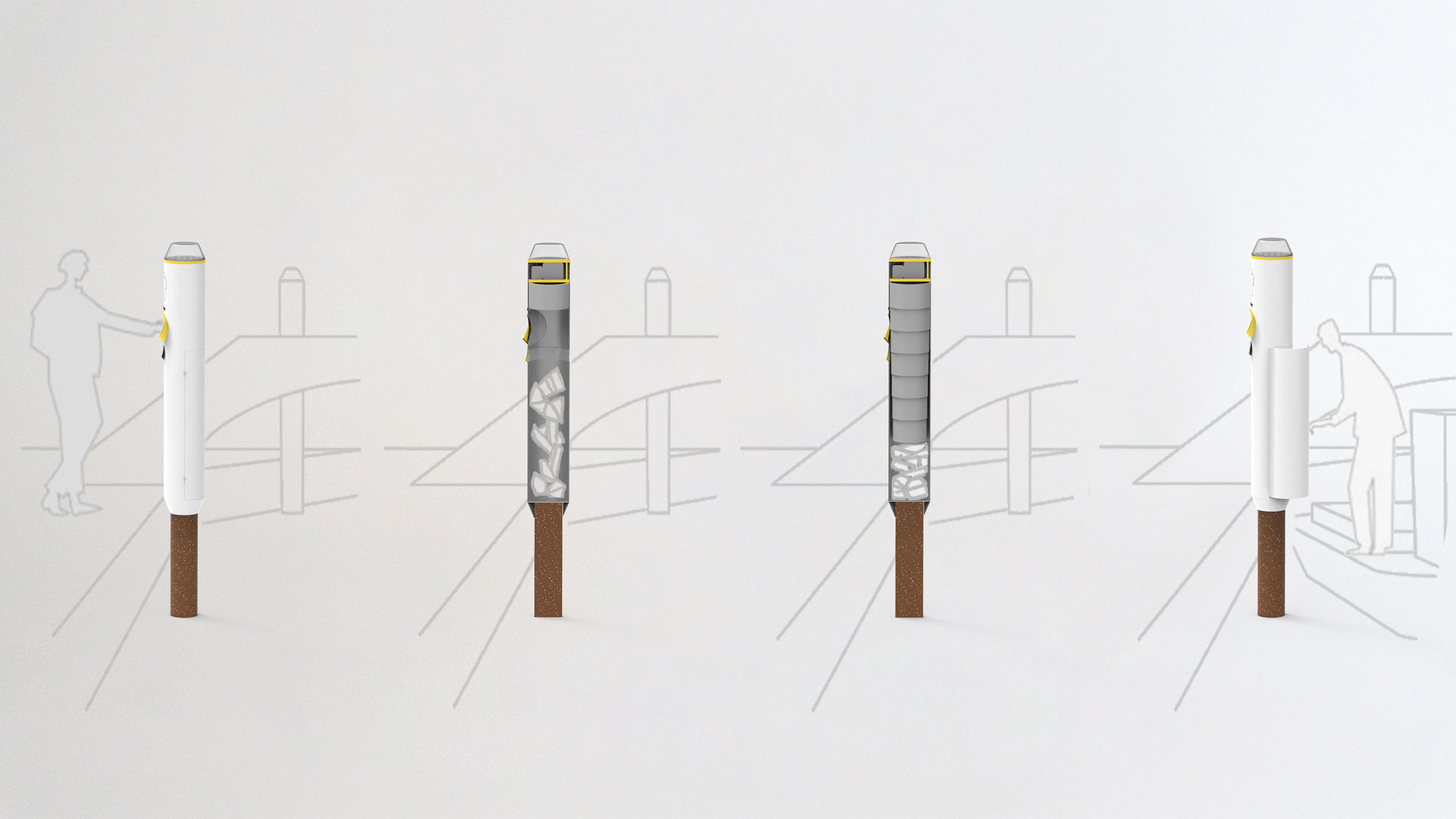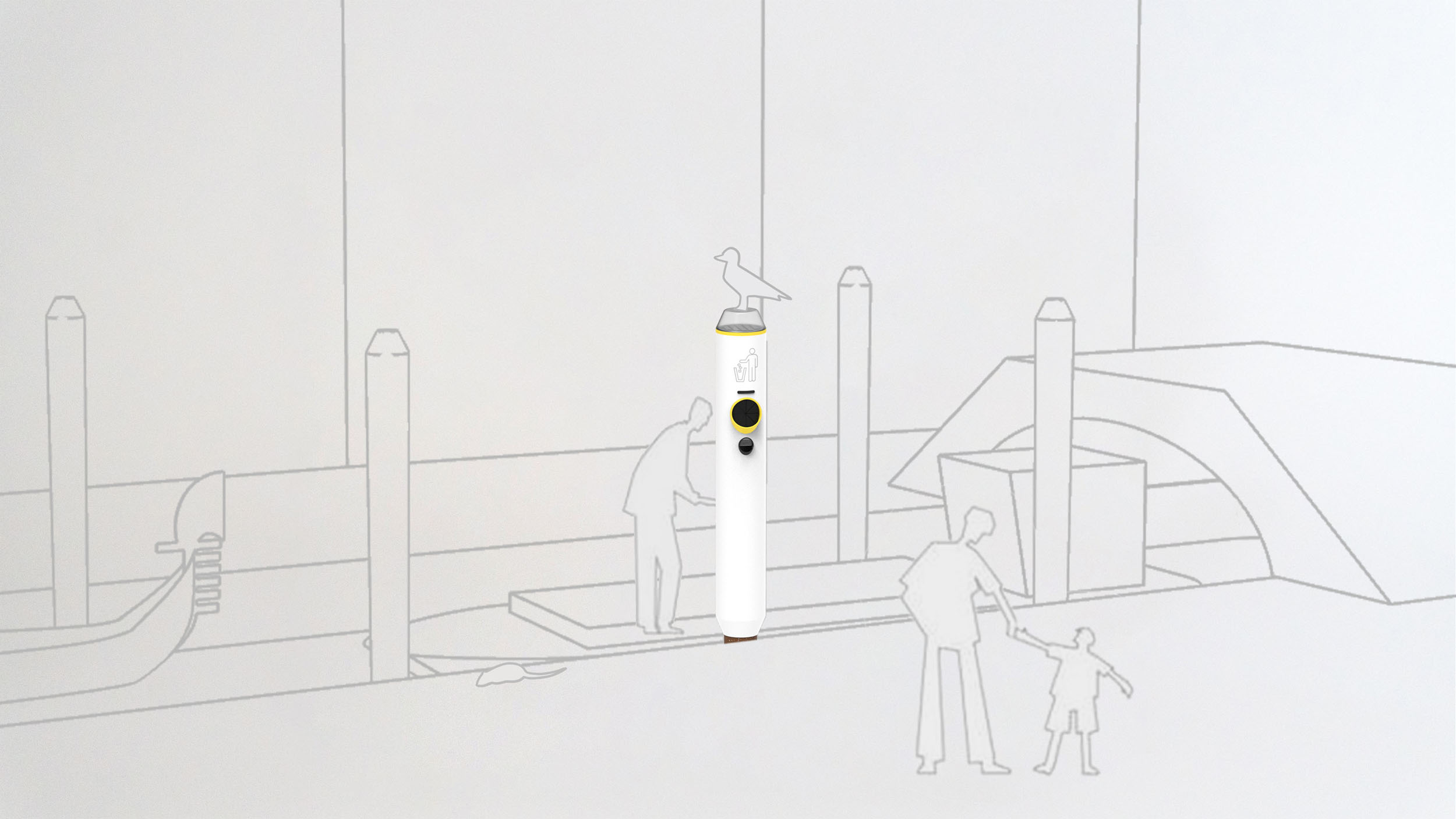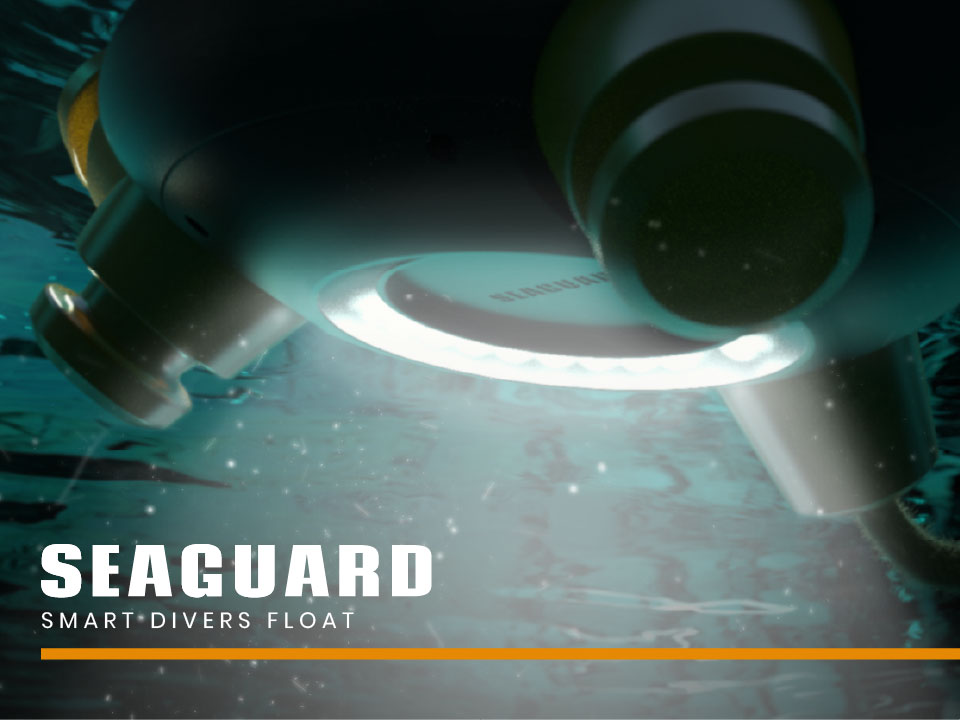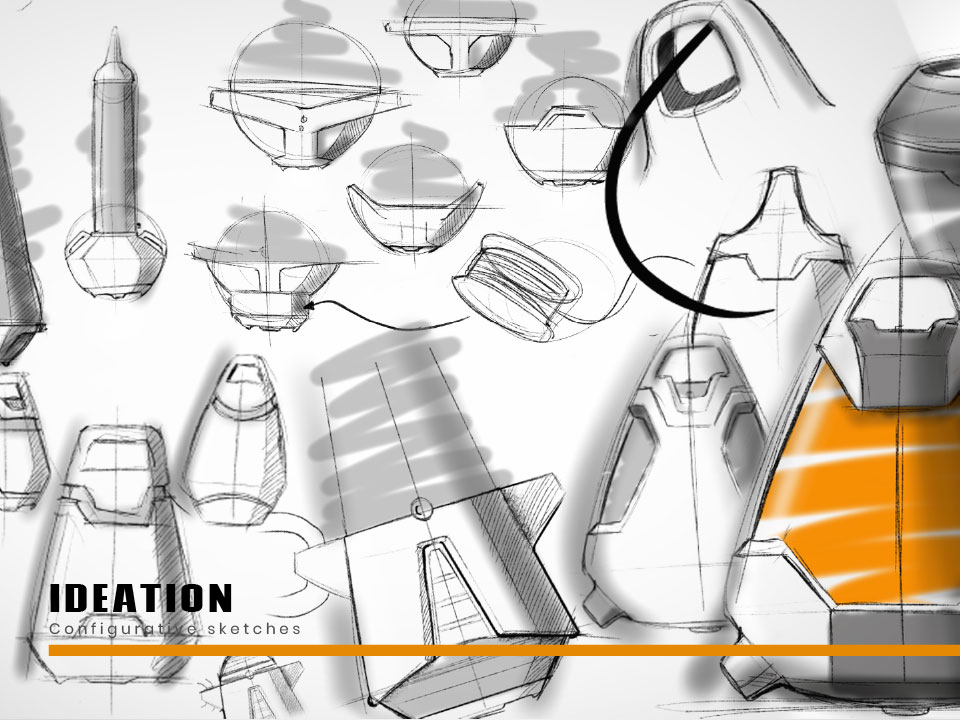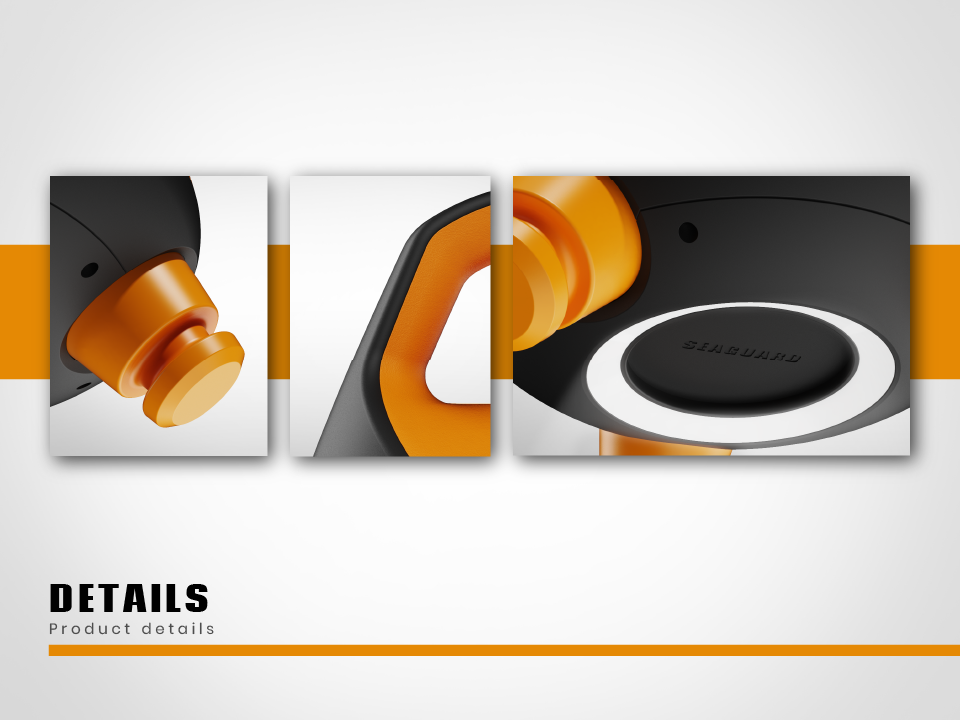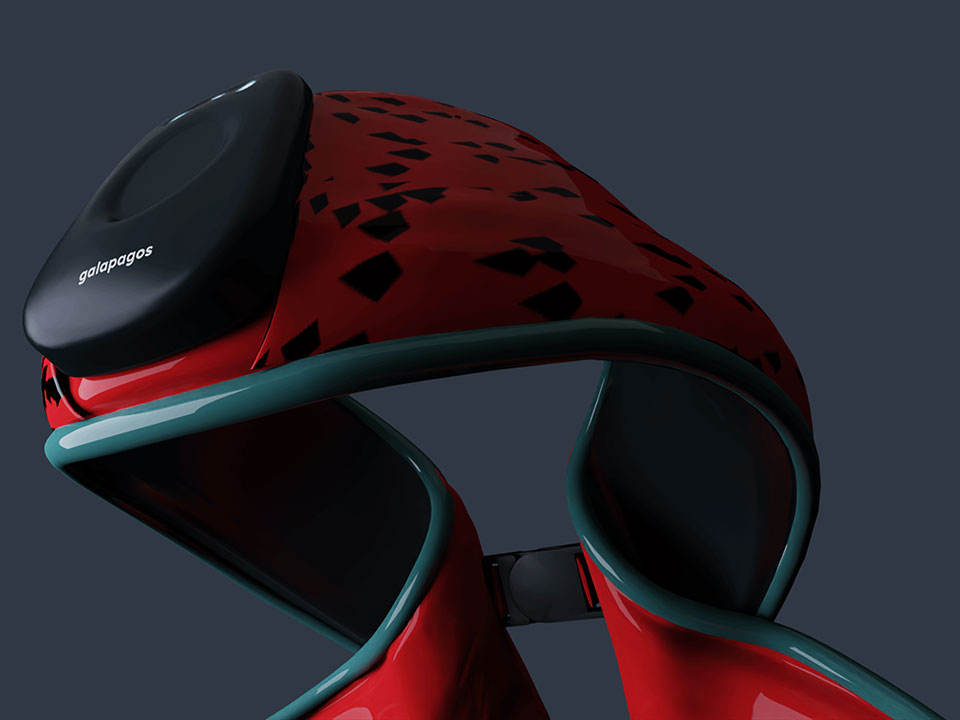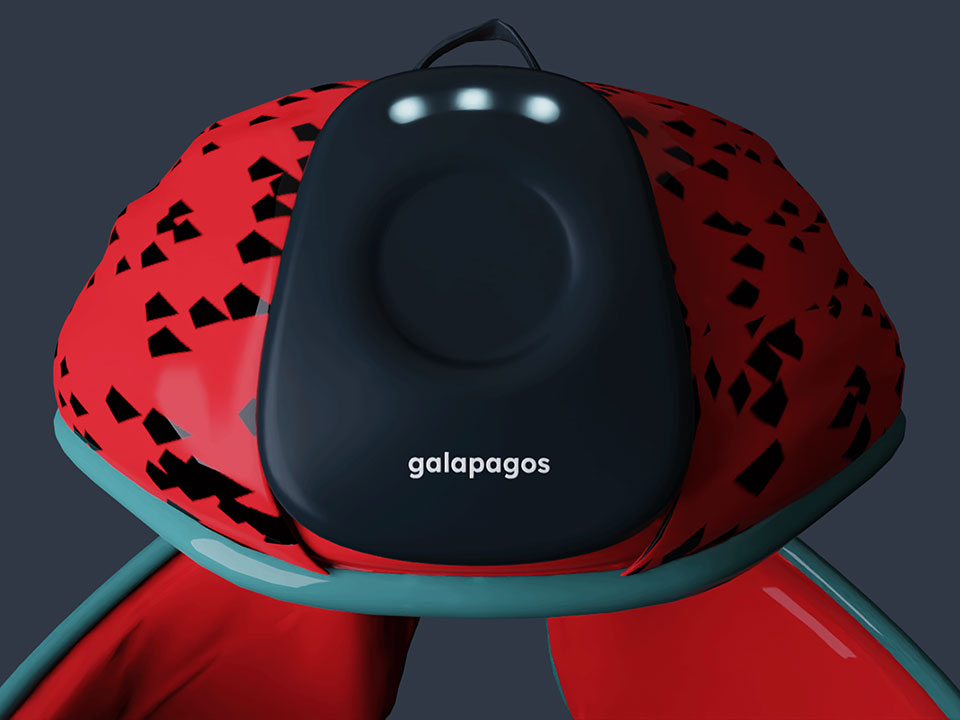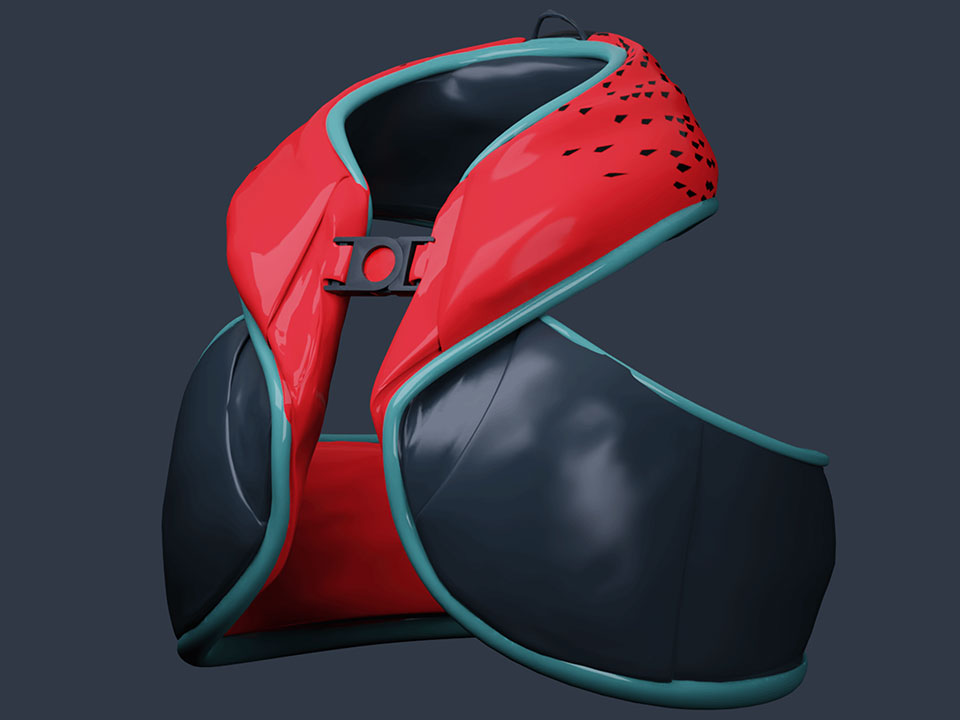first place
Briccola-Bin
Marco Ciacci
Free University of Bozen-Bolzano, Faculty of Design and Art – Italy
In order to solve the problem of the nautic collection of urban waste in the historical center of Venice, where I live, my project consists in the introduction of a new system of high-tech trash bins incorporated in the traditional shape of the Venetian briccola and in the promotion of a campaign of sensitive action and information to civic sense, through the distribution of personal portable trash bags. BRICCOLA-BIN: waste collection system for VeniceIn order to solve the problem of urban waste in the historical center of Venice, where I live, my project consists in the introduction of a new system of high-techtrash bins incorporated in the traditional shape of the briccola and in the promotion of a campaign ofsensitive action and information to civic sense, through the distribution of personal portable trash bags. But before arriving at these solutions I undertook a long process of observation, investigation and dialogue with the problem itself. I identified the main problems revolving around the existing bins that I was supposed to neutralise. I observed the behaviour of Venetians and came across amateur solutions. I discussed and interviewed waste collectors and learned their point of view.
The first product, the mini-Bin, is based on a Venetian habit of keeping rubbish in his pocket. The result is a product never seen before. What I have done is to give pride to such a misjudged product as the rubbish bag, giving it a soul, designing every detail and elevating it to a fashionable product. The aim is to distribute them to tourist when entering Venice and raise awareness of responsibility for one’s own waste. The function is very simple. As well as containing the instructions in the back of the package, the mini bin is very compact at first and then opens up, containing the packaging itself. Once full it becomes an elegant bag and by scanning the QR code you can reach the nearest bin. The choice of materials was as eco-friendly as possible with packaging and a handle made of recycled paper, with an interlocking closure. The bag, on the other hand, is made of Tyvek, making it tear-resistant and watertight.
The epicentre of this revolution is the Briccola-Bin. The main problem was to be able to place a rubbish bin in such a delicate artistic context as the city of Venice. My design borrows the traditional shape of the briccola and places it in the water, solving many of the problems now present. The litter bin wanted to look like the briccola and disappear into the landscape but finally I decided to make it a new protagonist, white in colour, unusual, it has become a modern technological and efficient object, a product that finally solves the problem and does not look like the usual dirty waste bin, bringing an air of innovation to such an ancient city. The positioning at the edge of the fondamenta was a choice driven by function. It will be accessed from the fondamenta through a dimensioned entrance. Inside there is a compactor that optimises the space and a control unit monitors the contents. Veritas operators have access directly from the boat without wasting time.
With this innovative shape many of the problems presented have been solved. The rubbish is kept away from seagulls and panteganas, the entrance is too small for private rubbish, the shape blends in with the artistic landscape of Venice, collection is easier and more efficient allowing mass tourism to be faced.
Finally, thanks to the data provided by the Briccola-Bins a more efficient waste management can be achieved. The Briccola-Bin can be easily substituted for the existing briccolas. By knowing the contents of the Briccola-bin, the most efficient collection routes can be generated and underused bins can be identified.
The latter can be strategically relocated to areas where they are needed and finally by placing three Briccola-bins side by side separate waste collection zones can created.
second place
Seaguard
Tom Man
Shenkar College - Israele / Israel
SEAGUARD is a smart divers float designed in order to reduce and preventaccidents of boats and diverswhilescubadiving in the open sea (professionally or as a hobby).Itsmotivationis to create a more efficientcommunicationbetween boats abovedivingsites and the scubadivers by combininglightings systems (alerts and indications) and EPIRB for SOS signals.
The design research in this project relayed on interviews and observations. A lot of subjectscame up duringquestioning but 2 of thembrought up several times because of theirgreat impact on divingaccidents: The importance of communication and the complexity – multiple equipmentneededwhilescubadiving.
The ideation stage collects of the goals and needsbrought up in research and conclusions stage and usingsketching to embody and bring themtogether and createsitsshape.After finding the right configurationswhichcontains: Handle, Body, legs and Lights, the next stage was to translate the sketches to 3D structure.
The purpose of a divers float is to be visible to boats in environmentssuchasseas and oceans, therefor the use of Orange make it stands out (complementary color – Orange over Blue) and givealert on divers position.The use of glossysurface for the body fits to wetenvironments and itsreflectivenessallowit to be more visibleduring day and night.The handle integrated with texture whichprovides a better grip to the user.
Differentcombinations of color arrangeallows the diving clubs as the target audience to choose theiruniqueappearance with combination of their logos or trademarks.
third place
Galapagos
Marco Porpora
ISIA Roma Design/Italy
Takingits name from the marine birds that populate one of the mostnaturalisticterritories in the world, Galapagos is an active and passive flotation devicewhichallows to support the boat in swimmingboth in the marine context and in the sporting context. The strong point of the product is the use of technologyfor recognizingdangerous situations and the risk of drowning.
Itisestimated that more than 380,000 people die from drowningworldwideeveryyear, which places drowningas the thirdleading cause of death.Accidentspecifically in the younger age group after road accidents and falls. Galapagos offers an innovative solution that combinesthe reliability of a floatingfoam product and the proactivity of a system that exploits the latesttechnologies to promptlyrecognize situationsemergencies and drasticallyincrease the buoyancycapacity thanks to activeinflation systems.


